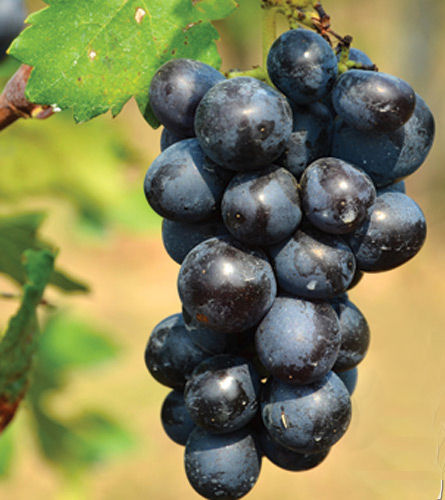BY BONNIE GARCIA
The history of grape growing in Texas predates that of California by nearly a century. As early as the 1680’s, Franciscan monks brought grape cuttings from Mexico and established vineyards near El Paso.
European settlers too attempted to establish vineyards, but those vineyards soon failed. Efforts continued for centuries and in the 1960’s, Texas grape growing experienced a resurgence.
Finally, in 1999, Texas A&M professors set about understanding and developing a grape resistant to Pierce’s Disease (PD) which is a high risk to grape growers in the Valley.
In Pierce’s disease, grapevines become infected by contaminated nursery stock or by a sharp-shooter insect that feeds on infected grapevine tissue and then feeds on a non-infected grapevine where the bacteria then multiply, the plant is deprived of water. Symptoms include irregular leaf scorch, shriveling of the berries, and finally cordon die-back and vine death. Along the Gulf Coast, planting Pierce’s disease resistant grapes is highly recommended.
Some grape varieties such as ’Black Spanish’ and ’Blanc du Bois’ are capable of being heavily infected with PD symptoms yet still producing acceptable crop loads and growing normally the next year.
‘Blanc du Bois’ is currently the best wine grape variety resistant to PD. Berries are round, light green, and with a pleasant muscat flavor, typically ripening early July in the Valley.
‘Black Spanish’ is considered the highest quality red wine grape tolerant to PD and has produced high yields in South Texas since 1889; however, it’s subject to iron chlorosis in alkaline soils. ’Black Spanish’ typically ripens in mid to late July here. ’Victoria Red’ is a PD tolerant, seeded table grape that produces high quality fruit and has survived PD for over 25 years. Vineyards should be planted on a hill and kept weed-free to minimize competition with grapevines and not be planted close to water as the lush plant life encourages the sharpshooters.
Higher risk was associated with slowly draining clay soils. Monitoring for insect pests is recommended where 3 to 5 yellow sticky card traps per acre work best.
The insecticide of choice is thiamethoxam (Platinum®, Flagship®) which acts on the central nervous system of insects, and Provado® recommended for foliar application. It is not recommended that growers rely on contact insecticides alone to manage insects. The use of rootstocks as a tool to manage Pierce’s Disease (PD) in Texas and the natural adaptability to regional soil is being explored.
There is preliminary evidence certain rootstock-scion combinations enhance disease tolerance, albeit slightly, in high disease pressure environments.
For more information, go to aggie-horticulture.tamu.edu/




